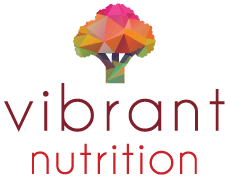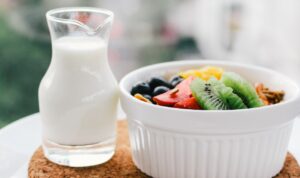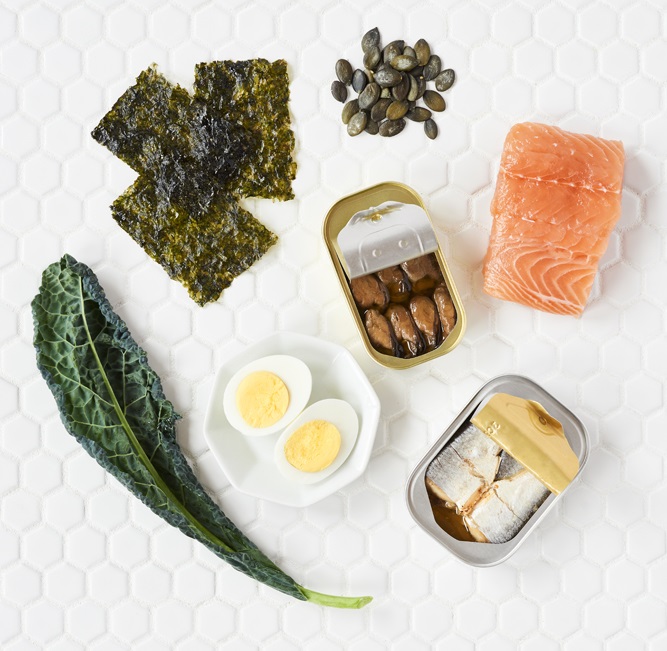June 8th, 2020
Do kids need milk?
There has been a lot of confusion and debate about dairy over the past several years. The latest versions of Canada’s Guide for Healthy Eating has caused even more confusion. Dairy products were removed from having their own category, and instead collapsed into protein foods. So what IS the role of milk in our kid’s diets? And do kids need milk at all? Once considered a staple, many families are consuming much less or no dairy for a variety of reasons. Current Canadian recommendations remain that children above 1 year old get 2 servings (2 x 250 ml) of full-fat dairy products per day.
Does it matter if your child drinks more dairy than this? Do kids need milk at all?
Let’s break down the old and new recommendations, why they’ve changed, and how to make sure your kids are getting everything they need to support optimal growth and development.
The OLD Food Guide Recommendations:
As a stand-alone food, full-fat milk products provide a lot of nutrition for kids. They are full of healthy fatty acids such as Conjugated Linoleic Acid, Vacenic acid and saturated fat. All of these are crucial for brain and nervous system development and great sources of energy. Dairy is also an excellent source of calcium and vitamin D through fortification. And dairy milk can be an easy win for protein and calories, which are essential for growing bodies.
If you have a child who actually meets the guidelines, then 2 cups of whole milk would provide:
- ~15 Grams of protein
- ~60% of the daily value for calcium
- 200 I.U. of vitamin D
- 300 calories and lots of healthy saturated fat
- What You Need to Know About Dairy and the Food Guide
Dairy milk is considered the easiest transition beverage after an infant finishes with breastmilk or formula or a combo. Remember, breast milk is mammalian milk and contains many of the same qualities as dairy milk. These include lactose sugar, protein, fat and energy. Fortified infant formulas are lactose and dairy-containing, unless you have a need to use soy or hydrolyzed alternatives. Cheese and yogurt were included as well in the old food guide as options for protein foods for a growing child.
While dairy was included in Canadian food guides for years, it was mostly because of dairy industry influence. But in general, the inclusion of dairy as a food made sense as a nutritionally-dense food for children.
In recent versions of past foods guides, this dairy category was expanded to be called “milk and alternatives.” It included plant-based beverages like almond and soy milk. The consumption of these plant-based milks products became more popular. And statistics show that more Canadians were interested in vegetarian and vegan dietary ideals and products. The inclusion of plant-based beverages also better reflected the cultural diversity of Canada, which includes many population groups who have not typically consumed dairy. So, the category was broadened to Milk and Alternatives. It stood as its own food category representing calcium in the Old version of the food guide.
The Current 2020 Guide to Healthy Eating for Canadians
The food guide released in 2019 looked remarkably different than the previous versions. It uses a plate model to help Canadians visualize what they should eat like, and has removed the concept of servings of foods per day. 70% of Canadians didn’t understand the concept of servings and so was deemed not useful.
Dairy and Alternatives have been removed as a stand-alone group. Another notable removal was fruit juice as a “serving” of fruit (PULEEEEEASE, dietitians have been saying this for years!). Three main food groups remain: Protein foods, Grain foods and Fruits/Vegetables. It promotes a more plant-based eating focus. Animal products are still listed as protein sources that can be part of a healthy diet. Meat products, fish and seafood, eggs and dairy products are all considered protein foods, along with plant-based proteins such as beans, lentils, tofu, nuts, and higher protein dairy alternatives such as soy milk.
Water is promoted as the beverage of choice. While it mentions limiting sugary beverages, there’s no mention of how milk might fit into this. This change and lack of specifics was confusing for many, particularly Canadians who grew up on dairy. And parents wondered if they should be giving it to their children.
Why don’t people want to give their kids milk?
There are many reasons people are avoiding milk more. Top concerns from a recent poll of Canadians show environmental concerns, animal welfare and perceived lack of health benefits. Sometimes this is based on cultures in which milk and animal products in general are not consumed. Some people avoid animal products and pursue a vegetarian or vegan diet for perceived health or ethical reasons. Environmentally, animal products have a differing toll on resources. Animal milks tend to use more resources than plant-based beverages. But almond milk is a great example of the green-health washing that happens with this trend.
This article in The Guardian outlines why almond milk isn’t the best choice: “‘What people don’t know is the environmental damage almond plantations are doing in California, and the water cost. It takes a bonkers 1,611 US gallons (6,098 litres) to produce 1 litre of almond milk,’ says the Sustainable Restaurant Association’s Pete Hemingway.”
Dairy allergies and lactose-intolerance are other top reasons that more parents are reducing or avoiding fluid cow’s milk. In households where parents have intolerance, dairy milks are purchased and consumed less often. Some families are choosing to avoid it altogether. And some argue that the consumption of dairy is completely unnecessary.
So what is the science saying about whether kids need milk?
Science, particularly nutrition science, is always changing, so recommendations are updated as we find new evidence. Randomized controlled trials, however, are not the benchmark of nutrition research; nutrition cannot be studied this way effectively. We often look to reviews and observations to confirm nutrition science facts. Not one particular study, but many studies that are done well, confirming the same things are a great way to look at nutrition.
A systematic review from 2019 revealed that there’s definitely a basis for the consumption of dairy, noting that it significantly increases bone mineral content during childhood, though there was no conclusive effect on overall growth. A 2012 study showed the main two nutrients that are missing from the diet of children who do not consume dairy are calcium and Vitamin D. There is also no evidence that consumption of dairy affects body composition or size in children or adolescents. So it can certainly be considered part of a healthy diet for children.
But does that mean that kids NEED dairy?
Nope. Not at all, many cultures that have great longevity and health do not consume dairy products at all. Cultures such as traditional Chinese, Korean and Japanese have little to know dairy products at all and many healthy qualities as populations. They do not have increased risk of osteoporosis, cancers or heart disease, and in fact have much less than a typical North American. They have very little if any dairy in their diets, without adverse results. And it is certainly possible to raise your children without it, however it is important to consider the nutrients in dairy products and be sure on how they can be replaced.
Children have an acceleration of bone growth between ages 4 and 8 which is peak, so they need 4 x more calcium than any other time in their lives to support bone growth. While it makes sense to put dairy products into the protein category of the new food guide, since they contain a good amount of protein to support growth, it doesn’t account for the calcium and Vitamin D content that the previous milk and alternatives category supported.
What are some alternative foods that contain those missing nutrients?
Some plant-based beverages, such as soy milk, might be fortified with calcium and Vitamin D and contain higher amounts of protein, making it more similar to dairy. Soy beverage is the best choice of all non-dairy milks as it contains a complete spectrum of amino acids to support optimal growth. But many plant-based products do not have the same nutrition as their counterparts. So read labels carefully if you’re making to switch. And remember that it is not recommended to give children under 2 plant-based milks. You don’t want them to fill up on liquids with little nutrition. Almost all plant-based beverages are highly processed and contain many emulsifying agents, binders and fillers to keep the liquid from separating.
You can also get calcium from a variety of food sources. These include dried beans such as white navy beans, calcium-set soy and tofu products, almonds, canned salmon with bones. Dark leafy greens like bok choy, broccoli and kale are also calcium rich. Make sure you cook them before eating! Vitamin D is found in relatively few foods and even fewer plant-based ones, so all Canadians young and old require a supplement. And no, you cannot get adequate vitamin D from sun exposure in Canada. We don’t want children especially to get a sunburn!
Is it okay if I still want to give my kids dairy?
Yes! My best advice if dairy is acceptable to you, serve yogurt or kefir daily, and cheese a few times per week. And give your child their D drops.
Is it okay if I still DON’T want to give my kids dairy milk?
Yes! My best advice is to serve yogurt and kefir if possible. If not, choose unsweetened fortified soy beverage, dark leafy greens, tofu, dried beans and fortified grain foods as regular daily foods for your child. And don’t forget your child’s vitamin D supplement!
Do what works best for your family. There are many ways to be healthy. The more variety you can offer your child, the better. Children need variety as pillar to support optimal growth and development.
References:
https://www.health.gov.bc.ca/library/publications/year/2017/pediatric-nutrition-guidelines.pdf
https://pediatrics.aappublications.org/content/117/2/544
https://food-guide.canada.ca/static/assets/pdf/CDG-EN-2018.pdf



